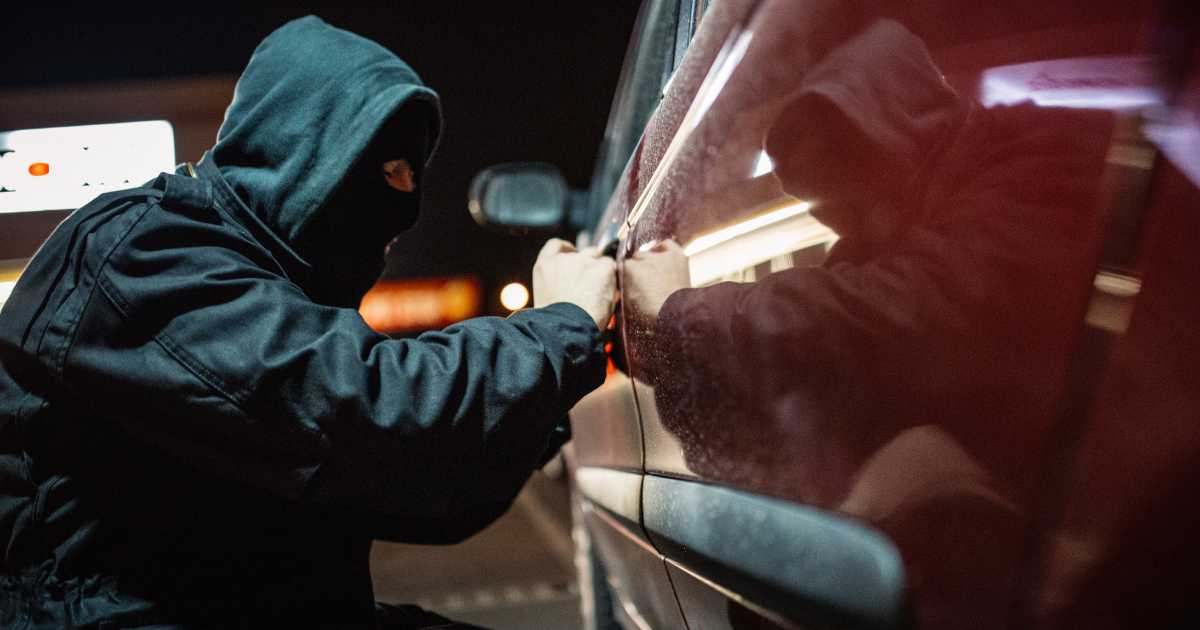Several makes and models of cars that use keyless entry systems are vulnerable to theft. With relatively inexpensive and readily available equipment, criminals can block signals from your car key fob and gain entry to your vehicle and steal it or grab what’s inside.
Manufacturers are now implementing additional security controls to prevent hackers from hijacking key fob signals, but even those methods aren’t 100% effective. There are, however, some easy, inexpensive steps you can take to thwart the criminals’ efforts. Read below to see how to protect your car against car key fob hacking.
How Thieves Use Relay Devices to Unlock Vehicles

As an added security measure, some car manufacturers limit the broadcast range of key fob signals, thereby making it necessary for you to get within as close as one foot from your vehicle before the key fob will unlock your doors.
One way criminals can defeat this control and unlock a vehicle even when a key fob isn’t within range is by using inexpensive relay devices. When one of these devices gets close enough, it can trick a key fob into behaving as though it is within range of its companion vehicle, thereby causing it to send the unlock code. The relay then captures the code and sends it to another relay that is close enough to the vehicle to unlock it.
Let’s say, for example, that you’re at work and a pair of thieves has been eyeing your BMW in the parking lot. They’ve done a bit of surveillance and know the car belongs to you. One of them enters your business with a concealed relay device. When he gets close enough to you and your always-on key fob, his device will capture the unlock signal your key fob uses and transmit it to his partner in the parking lot. The partner is standing close to your BMW with another relay device that receives the signal and re-transmits it to your car. Your BMW is now unlocked.
Or perhaps you’re at home sleeping soundly and your car is in the driveway. A criminal can use a relay device to scan your home from outside, searching for a nearby key fob’s signal. Perhaps you hang your keys on a hook just inside the front door. If the crook can get close enough, he may be able to capture the signal from outside your home and send it to a second relay device position near enough to your car to unlock it.
These relay devices have a range of up to 300 feet. This means that even if your key fob will only work when it’s within a foot of your vehicle, the signal it emits can still be intercepted and used to unlock your car while it’s hundreds of feet out of the key fob’s range.
The German Automotive Club published a list of vehicles that it found to be vulnerable to these relay attacks. Among others, they include certain models manufactured by Audi, BMW, Ford, Honda, Hyundai, Kia, Lexus, Mazda, Mitsubishi, Nissan, Range Rover, Subaru, Toyota, and Volkswagen.
Keyless Jamming
Some criminals find it easier to simply stop you from locking your vehicle when you leave it. They use a technique called keyless jamming. The thief will wait nearby with a jamming device. When you push the button on your key fob to lock your vehicle, the key jamming device blocks that signal. You walk away, thinking your car is secure when, in fact, it isn’t. After you leave, the criminal simply opens an unlocked door and takes what’s inside without the need to break in and without setting off any alarms.
An easy way to stop keyless jamming from being successful is to double-check your doors to make sure they’re locked before you walk away.
Rolling Unlock Codes and the “Rolling-Pwn” Method

Some vehicle manufacturers, including Honda, are now using key fobs that periodically generate new authentication codes that are then sent to the vehicles with which they are paired. While this is intended to beef up security, these rolling codes aren’t actually stopping the hackers and thieves. In fact, security researchers have found that every Honda vehicle that uses the rolling code system is still vulnerable.
Again using readily available equipment, hackers utilizing what they refer to as the “Rolling-Pwn” method can capture the rolling codes generated by Honda keyless entry systems and transmit them back to the vehicles to unlock them.
The Rolling-Pwn attack is similar to a Bluetooth-based keyfob hack that has been used to gain entry to some Tesla models.
How to Protect Your Vehicle Against Car Key Fob Hacking
Fortunately, there are a few steps you can take to reduce the likelihood that your key fob’s transmission will be intercepted and that a thief will gain entry to your vehicle. Here are a few that we suggest:
- Keep your key fob in a container that blocks the signal it emits to eliminate the possibility that it will be intercepted. Faraday bags like this one offered by Amazon are designed specifically to protect your key fobs and credit cards and do their job well and they are not expensive. Alternatively, you could keep your keys in a safe or another metal container, however, depending on the container, this may or may not be 100% effective.
- If you don’t have a safe place to store your key fob to prevent the signal from being intercepted, keep it as far from your vehicle as possible. Remember, the relay devices used by hackers to intercept and re-send unlock signals are effective from up to 300 feet away. If, for example, you’re at work and carry your keys in your pocket without having them in a Faraday bag, park your vehicle at the far end of the parking area.
- Try other security devices like this steering wheel lock to thwart car thieves. Criminals may be able to get inside, but a steering wheel lock will limit their take.
- Always double-check your doors to make sure they’re locked before leaving your vehicle unattended.
Final Thoughts
Criminals use a variety of tactics to gain access to locked vehicles. They may use a slim jim tool to unlock a door or simply break a window and reach inside. But methods like these take time, may draw unwanted attention, and often trigger alarms.
In contrast, using the signal from a compromised key fob is quick and easy. A thief who can simply walk up to a vehicle, open the door, and get inside is far less likely to be noticed or caught. We hope that our suggestions for making it more difficult for thieves to hack your keyless entry system have been helpful, and you’re now ready to make it as difficult for them as possible for them to access your vehicle.
- How Secure is Your Car? Tips to Stop Car Key Fob Hacking - December 17, 2022
- Cybercriminals Raking in Millions with “Hi Mom” WhatsApp Scam - December 17, 2022
- EU Websites Charging Visitors to Reject Tracking Cookies: A Practice Expected to Spread - December 17, 2022





